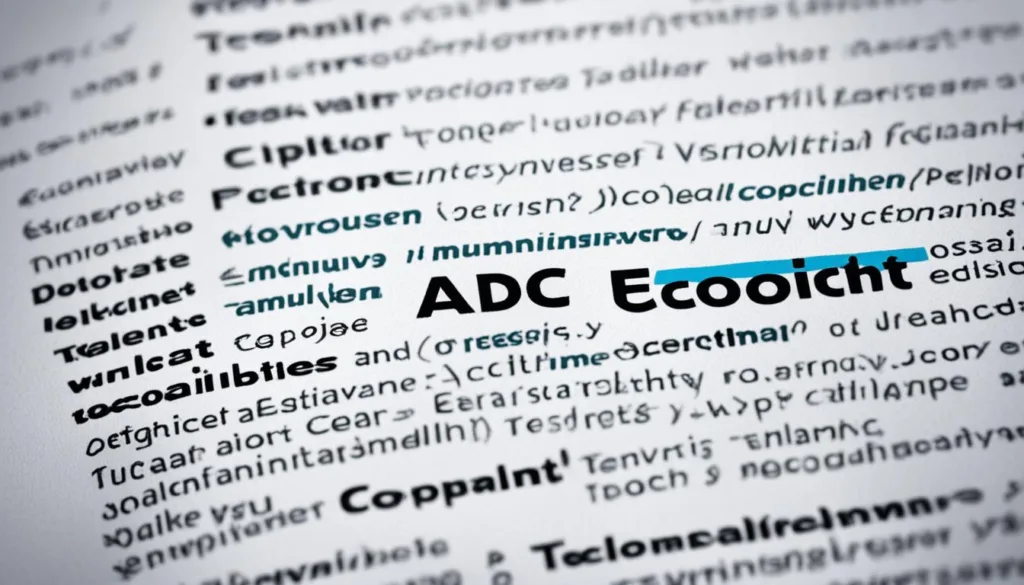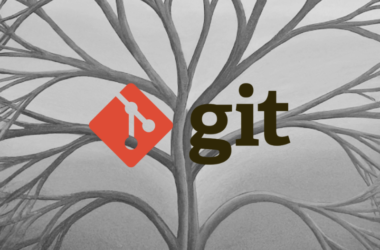Are you finding it tough to make clear, effective technical documents? Do you wish to improve your technical writing and grab your audience’s attention? You’re in the right place! This guide will show you the top ways to write well. You’ll learn to make documents that are easy for users and packed with information.
Technical writing is all about explaining tricky processes in a simple way. It’s used for many things, like putting together a home appliance or installing software. It’s key because it helps folks understand how to use products right. When you’re writing technical docs, remember these tips:
Key Takeaways:
- Know your audience and write in a way that suits them.
- Pick a writing style that’s truly your own.
- Use a checklist or outline to keep your work neat and in order.
- Be clear and straight to the point, and use formats that help.
- Add pictures and diagrams to make things easier to understand.
Understand Your Audience
Knowing your audience is a key practice in technical writing. Before you start, ask who your audience is and their skill level. Also, think about what problem you’re solving for them. To make your technical docs effective, you need to write in a way that fits your audience.
By figuring out their needs and expectations, you can adjust your writing. If your readers are beginners or not tech-savvy, use simple language. But for experienced pros, more technical terms and details may be needed.
Think about how your audience will use your docs. Will they look at it for troubleshooting, reference, or training? Knowing this helps you give the right info in the best way.
Making docs that meet your audience’s needs means they’re easier to understand. And they help readers reach their goals.
Identify Your Target Audience
To really get your audience, you might do market research or create user personas. This research shows you who you’re writing for. You learn their demographics, goals, and issues. Knowing this, you can make docs that talk right to them. This makes your writing more relevant and helpful.
Use clear and concise language
Clear and concise language is crucial for technical docs. Skip the jargon and hard terms that might confuse people. Use easy words instead. Break down hard ideas into simple steps. Include examples to clarify your points.
Provide context and real-life examples
Context and real examples make things click for your readers. Use case studies or stories to show how to use your info in real life. This shows the value of your docs and gets readers involved.
Understanding your audience is key in technical writing. When you match your docs to their needs, you create useful content. This content is easy to get and helps your audience succeed.
Choose a Writing Style
Selecting a style for technical docs is crucial. It lets you show off your unique voice. Learning from experts while finding your own style is key. Always aim to keep your writing true to you.
Picking your unique style can really pull readers in. It makes your work in technical writing stand out. Don’t just copy others; that can make your work seem less original. Use this chance to be creative and make your mark.
Your style shows who you are and what you know. It’s how people see your work. So, pick a style, formal or casual, that meets your audience’s needs.
Being Unique in Technical Writing
Being unique is important in technical writing. Your own style makes your work fresh and interesting. Focus on being clear and precise, but add a personal touch.
People looking at technical docs seek reliable info. Your unique voice adds credibility. It presents information in a way that stands out to your audience.
Avoid dull writing by adding your personality. Start with catchy openings and use examples that relate to the reader. Your goal is to make your writing so clear and simple that it keeps readers engaged.
Your own writing style can truly engage your audience. With your unique approach, your docs can impress and satisfy readers. This makes your work not just informative, but also memorable.
Have a Checklist/Process Outline
For technical writing, a checklist or a process outline helps a lot. It boosts your efficiency and ensures you don’t miss important steps. With a detailed documentation checklist, you can make your writing smoother and avoid missing any details.
Here is a suggested process outline for technical documentation:
- Brainstorming ideas: Start by gathering and organizing your thoughts. Think about the purpose and goals of your documentation and who it’s for.
- Conducting research: Research your topic well. Gather all important info, including technical details, user needs, and useful resources.
- Drafting: Start your first draft. Focus on clear and concise content that shares the needed info with your audience.
- Self-editing: Go over your draft to make it clearer and better organized. Make sure it’s easy for your audience to understand.
- Proofreading: Check your work for grammar, spelling, and other errors. Fix any issues to keep your document looking professional.
- Seeking feedback: Work with experts or coworkers to get their thoughts. Use their feedback to make your document better.
Using a checklist or outline keeps you organized and consistent. It helps you make top-notch technical documents that meet your users’ needs.
Write Clearly and Concisely
In technical writing, being clear and brief is key. You aim to give clear, easy-to-follow instructions and documents. It’s vital to steer clear of words and phrases that are unnecessary or confusing. These can make the message unclear or hard to understand.
Be direct and convey your message in a simple, brief way. Break complex ideas into shorter paragraphs. Using headings, lists, bolding, and italics helps make your document more readable. It keeps readers interested from start to finish.
Using headings is a smart way to keep things clear. They help readers find what they need fast. Lists also help lay out information in a tidy, easy-to-understand way. This makes the main points easier to catch.
Visuals like images, diagrams, and screenshots are key in clear, concise writing. They back up your points and add clarity. With visuals, readers can better picture the steps or ideas you’re explaining. This makes understanding the instructions easier.
To sum up, for strong technical documentation, remember to:
- Write in a clear, brief way.
- Split complex ideas into shorter paragraphs.
- Use formatting tools like headings, lists, bolding, and italics.
- Add relevant visuals to underline your points.
By following these best practices, you make sure your audience gets the message. They’ll be able to use what you document efficiently.
Benefits of Writing Clearly and Concisely
Writing clearly and concisely in documents offers big advantages:
| Benefits of Clear and Concise Writing | Explanation |
|---|---|
| Enhanced comprehension | Writing this way helps readers understand better. This means they can follow concepts and instructions more easily. |
| Improved user experience | Clear, concise guidance lets users work through products or processes smoothly. This makes their experience better. |
| Time-saving | Being clear and concise means readers find what they need fast. They don’t have to wade through lots of text. |
| Reduced errors | Clear, brief instructions mean less chance of mistakes or misunderstandings. This cuts down errors and risks. |
Include Visuals
In technical documents, adding pictures, diagrams, and screenshots makes complex info clear. These visuals let readers see what’s being explained. That means they can follow along and understand better.
Make sure to use clear, relevant images when you add visuals. Pick ones that show what you mean well and add more detail for your readers. For instance, with instructions, showing each step with a picture or screenshot can help people get it and do it right.
It’s a good idea to label the visuals. This tells readers why they’re important and how they fit with the text. This helps everyone grasp the visuals’ purpose and how they link to the information given.
Also, prepare visuals for the web by making them quick to load but still clear. This ensures they enhance, not slow down, the reading experience.
Now, let’s consider an effective example of visuals in technical docs:
The image shows how well-chosen visuals can go hand in hand with text. They offer a straightforward look at the concept being talked about.
Define Acronyms and Avoid Excessive Abbreviations
When writing technically, make sure everything is clear. This means explaining acronyms when they first appear. If you don’t, readers might get confused. So, always spell out acronyms and what they stand for the first time you use them.
Stay clear of too many abbreviations. They can make things unclear and hard for readers. Use clear words instead. This helps your readers understand your message better. Keeping things clear and easy to read is key for technical writers.

| Acronyms | Meaning |
|---|---|
| SEO | Search Engine Optimization |
| HTML | Hypertext Markup Language |
| CSS | Cascading Style Sheets |
| API | Application Programming Interface |
Defining acronyms and limiting abbreviations makes texts clearer. It also makes them more enjoyable to read. Following these tips, writers help their readers understand better. Paying attention to clear communication makes technical writing more effective.
Use Developer-Tailored Blogging Platforms
Writing technical documentation for developers? Use developer-focused blogging platforms to boost your impact. These platforms are built for developers, offering them a place to find answers and solutions.
By using these platforms, you connect with a community of developers seeking valuable info. This increases the chance of reaching developers who want to improve their skills and stay current with trends.
Benefits of Developer-Focused Blogging Platforms
Choosing these platforms offers several advantages:
- Targeted Audience: You’ll reach developers who are most likely to find your documentation helpful.
- Engaging Community: These platforms have an active community for developers to share insights and collaborate.
- High Visibility: They’re often at the top of search results, making your documentation more visible.
- Access to Tools and Resources: You get tools and resources to make creating and publishing documentation easier.
By posting your technical docs on these platforms, you make your work more valuable. You ensure it really connects with developers.
| Developer-Focused Blogging Platforms | Features |
|---|---|
| Dev.to | A vibrant community, code formatting, tags, and the ability to cross-post content. |
| Hacker Noon | A platform for tech experts to share insights in an accessible way. |
| Hashnode | A place for developers to write, share, and connect with others. |
| Medium | A popular site with a wide range of topics, including tech docs for developers. |
Get an Editor
Editing is very important in technical writing. An editor does more than just proofread. They help make your writing clear and free of errors. Working with an editor makes your technical documents better and more effective.
Editors bring a new view to your work. They find parts that could confuse readers and suggest improvements. Their skills make your writing look professional.
Editors also keep your writing consistent. This is key for technical documents. It helps your readers stay engaged and understand your message. Working with an editor keeps your writing’s voice and style in tune with your audience.
An editor ensures your work is perfect. They check for any grammar or spelling mistakes. This makes sure there’s no confusion in your technical documents.
Technical documents are complex. An editor gives you a fresh look at your work. They have the skill to make your writing sharp and impactful.
Getting an editor boosts your technical writing’s success. Their feedback and attention to detail elevate your work. You can hire a professional or work with a detail-oriented colleague. Either way, their input improves your documents.
Benefits of Having an Editor in Technical Writing:
- Provides valuable feedback
- Catches errors and ensures clarity
- Maintains consistency in style and tone
- Acts as a gatekeeper for error-free documentation
- Offers fresh insights and a critical perspective
Editing is crucial in technical writing. An editor makes your documents clearer and more user-friendly. This helps your audience understand complex topics easily.
Key Advantages of Collaborating with a Technical Writing Editor
| Advantages | Description |
|---|---|
| Valuable Feedback | An editor provides insights and suggestions that improve your technical writing. |
| Error-Free Documentation | Editors catch errors, ensuring your documentation is clear and error-free. |
| Consistency in Style and Tone | An editor helps maintain a consistent voice throughout your documentation. |
| Fresh Insights | An editor brings a new perspective and critical eye to your work. |

Be Consistent and Continuously Improve
Consistency matters a lot in technical writing. It’s vital to have the same style, formatting, and tone in your whole document. This makes it easy for readers to get your points and understand the info better.
To keep consistent, always work on getting better at writing. Here are some ways to improve:
- Take Technical Writing Courses: Join courses on technical writing to learn more and get better at it.
- Read Extensively: Check out technical documents from various fields to see different styles and methods.
- Attend Events: Go to seminars, workshops, and conferences about technical writing to learn the latest trends and tricks.
- Interact with Others in the Field: Talk with other technical writers, join online groups, and take part in discussions to learn from others and get new ideas.
- Seek Feedback: Show your work to colleagues, mentors, or professional editors for helpful feedback. This can show you what you need to work on.
Working hard to improve your technical writing skills can make your documentation better and more effective. Keep learning and applying what you learn to make your writing better and help users have a great experience.
Avoid Plagiarism and Assumptions
Plagiarism is a big no-no in technical writing. It means taking someone else’s work or ideas without saying it’s theirs. Always give credit to the original creators when you use their work in your documents. This shows you respect ethical standards and keeps your work authentic.
Don’t assume you know what your readers know. Technical documents must be clear to everyone, no matter their background. Explain everything step by step, and use simple terms. Also, provide extra resources for those who want to dig deeper. This makes sure no one feels left out or confused.
Tips to Avoid Plagiarism in Technical Writing:
- Always attribute external sources by providing proper citations or references.
- Use quotation marks when directly quoting someone else’s words or content.
- When paraphrasing, rephrase the content in your own words and provide a citation.
- Utilize plagiarism-checking tools to verify the originality of your content.
Tips to Avoid Making Assumptions in Technical Documentation:
- Provide clear explanations and definitions of technical terms and concepts.
- Break down complex information into easily digestible sections or steps.
- Offer examples and practical use cases to illustrate concepts.
- Include references to additional resources or further reading for readers who may require more in-depth understanding.
| Plagiarism in Technical Writing | Avoiding Assumptions in Technical Documentation |
|---|---|
| Plagiarism refers to using someone else’s work or ideas without proper attribution. | Avoid making assumptions about readers’ knowledge or experience levels to ensure inclusivity. |
| Give credit to the original source by providing citations or references. | Define technical terms and provide clear explanations to enhance understanding. |
| Use quotation marks for direct quotes and paraphrase content properly. | Break down complex information into manageable sections or steps. |
| Use plagiarism-checking tools to ensure the originality of your content. | Include examples and practical use cases to illustrate concepts. |
Conclusion
Good technical documentation follows certain best practices. Know your audience and write in a way that’s easy for them to understand. This makes your work clear and helpful. Use a checklist to keep your writing organized and effective.
Adding pictures and diagrams makes complex ideas easier to grasp. Always explain acronyms and abbreviations. This prevents misunderstandings. Platforms designed for developers can help you reach the right people more easily.
Working with an editor makes sure your documentation is free of mistakes. It also keeps your work consistent. Always aim to get better by learning new things and listening to feedback.
Using these strategies in your technical documents makes them useful and informative. They help your audience grasp and use the products or processes you’re writing about.






